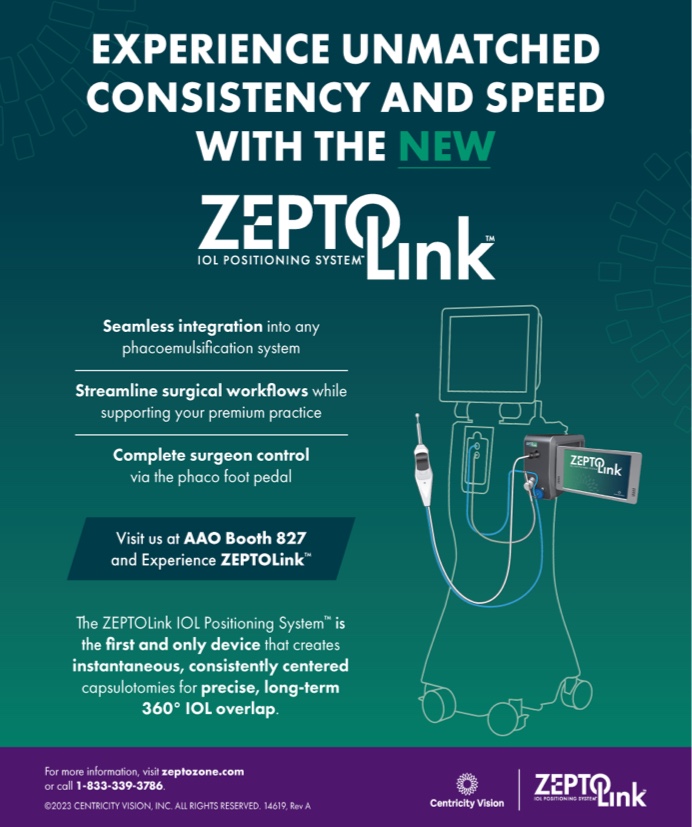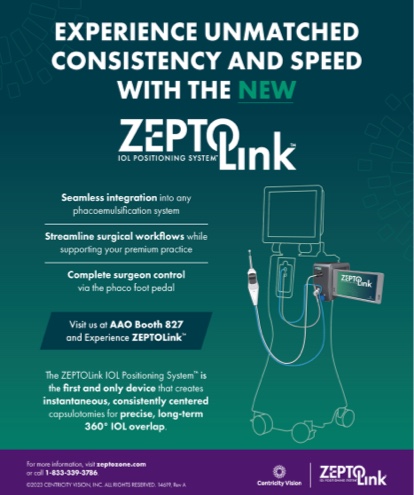When I began looking for a new phaco system, my wish list was long. It included excellent fluidics for chamber stability, smooth cutting and aspiration, and the ability to perform a high-quality, efficient, anterior vitrectomy. Most importantly, I wanted a device that would be a good match for my personal technique and help me achieve the best possible outcomes for my patients.
I knew that making the right choice was important; I was going to be “married” to this expensive new piece of equipment for years to come. With three great candidates among the current generation of phaco systems— Infiniti Vision System (Alcon Laboratories, Inc.), Stellaris Vision Enhancement System (Bausch + Lomb), and the Whitestar Signature System (Abbott Medical Optics Inc.)—the right choice was not immediately obvious.
In the process of trying out each machine, I learned four important lessons.
No. 1. Invest the time to get to know the systems
Each phaco system sounds wonderful in the marketing materials. In fact, they are all wonderful, but they also operate very differently. It would be a mistake to think a person could get an accurate sense of the differences on a trade show floor or even during a full day of surgery.
For example, my initial impression of one of the devices was that it lacked power and responsiveness. It turned out that the foot pedal simply had a longer excursion than I was accustomed to, and once I began fully depressing the pedal, I had a completely different experience. Had I only performed a few cases with this machine, I might have been left with my inaccurate first impression.
It takes a little time for the sales representative or technician to identify the surgeon's style and adjust the device's settings accordingly. I suggest surgeons use each device under consideration for about 4 surgical days. If necessary, one can purchase additional disposable packs and use the system on challenging eyes and those with different types of nuclei.
No. 2. Each one has superior qualities
Each of the three machines mentioned herein has some qualities that outshine the others'. Just like romantic partners, however, no phaco system is perfect. A surgeon has to find a system to love—despite its flaws—because it brings out the best in him or her.
Here is a breakdown of the features that are important to me.
Infiniti With OZil Intelligent Phaco
The OZil torsional handpiece cuts through the lens beautifully. Using an oscillating motion, it smoothly shears the lenticular material, thus reducing fragment repulsion and increasing cutting efficiency. I was less impressed, however, with this system's fluidics and chamber stability (ie, chamber bounce). It is important to note that the Infiniti is a purely peristaltic system but offers many benefits for a variety of surgical styles.
Stellaris Vision Enhancement System
This system offers stellar chamber stability, confounding the conventional wisdom that venturi-style pumps offer more power at the expense of safety. Based on that point alone, it could be the safest system. It is also the only one of the three devices that can create a sub-2-mm incision without removal of the phaco sleeve. As a true venturibased system, the unit offers phenomenal followability and is extremely effective. This is a more traditional longitudinal phaco system, however, it does cut quite well even without the lateral tip movement that impressed me with the other two devices.
Whitestar Signature With Ellips Transversal Ultrasound
Going back and forth, on the fly, between peristaltic and venturi pumps with this system is quite revolutionary, and I was able to adapt to a nice change in my technique. I was also impressed with the device's vitrectomy power and rate. The ability to make a complete, quick cut and to thoroughly clean up cortex has saved me in difficult situations, like an unexpected traumatic cataract and a very mature cataract in an elderly African immigrant. With these traits, plus transversal phacoemulsification, the Signature offers a variety of features that provide much of what I want in a single machine. The incision size with this device, however, currently is the largest of the three machines. Therefore, it requires a keratome that precisely matches the tip to create the best fluidics this machine can offer for proper chamber stability.
No. 3. All Surgeons Might Not Want the Same Qualities
The differences in cutting motion, fluidics, pump style, and incision size among these systems must be weighed against the demands of the surgeon's technique.
I favor phaco chop. I like to move fast but with safety and a stable chamber. I chop the nucleus down the middle, then turn it 180° and chop it again to create four quadrants. With this technique, if I can achieve a complete separation of the quadrants (I believe surgeons will be doing this with a femtosecond laser in the future), a vacuum-style pump can easily pull the pieces to the phaco tip with very little movement of the tip inside the eye. Because one does not need to gain occlusion of the phaco tip to build vacuum with venturi, there is no need to fish around for fragments to achieve the holding force necessary to pull them into the tip.
This has the potential to make phacoemulsification proceed very quickly and eliminate the extra manipulation, occlusion, chamber bounce, and trauma to the zonules that can happen when the fragments have to be pulled and chased. The benefit of using a lower vacuum setting during this part of the case is that there is less risk of postocclusion surge in a more stable chamber without the constant changes in pressure inherent in a traditional peristaltic/scroll pump-based system. For these reasons, a venturi-style system is very appealing to me. Always be aware, however, of the potential to lose small lens fragments with torsional or transversal phacoemulsification.
No. 4. Ask more of yourself
Testing phaco systems has proven to be a useful exercise, apart from facilitating my purchasing decision. The attention I focused on comparing chamber stability with each device, for example, demonstrated to me that I often had more microsurges than I wanted with my old system (and with two of the new systems). I gained a better understanding of fluidics. When the chamber was not perfectly stable, my staff and I would adjust the settings to create the safest possible operating environment instead of just accepting the status quo. A critical lesson from “phaco dating” was that the technology can be pushed further than what I thought. Surgeons can get more from the device and from themselves if they take the time to refine their settings and their technique.
CONCLUSION
Cataract surgeons can choose from three very good phaco systems. All are ergonomically sound and easy to use, with intuitive interfaces. All of them offer significant advances over previous generations of the technology. I encourage surgeons to explore the very real differences between the units in a deliberate, hands-on fashion to find the system that is best suited to their surgical style.
Sheri Rowen, MD, is an assistant clinical professor of ophthalmology at the University of Maryland and the founder and medical director of the Eye & Cosmetic Surgery Center at Mercy Medical Center and the Rowen Laser Vision & Cosmetic Center in Baltimore. She acknowledged no financial interest in the products or companies mentioned herein. Dr. Rowen may be reached at (410) 332-9500 or (410) 821-5333; srowen10@gmail.com.


